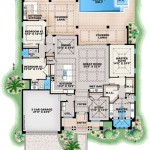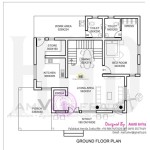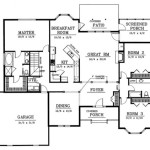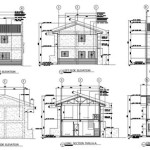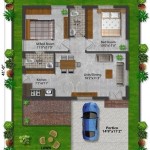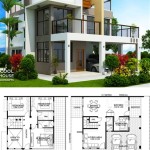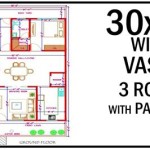In-Ground Basement House Plans: Essential Considerations for Underground Living
In-ground basement house plans offer a unique and practical solution for maximizing space and creating comfortable living areas below ground level. By incorporating basements into your home design, you can effectively increase the square footage of your property without expanding its footprint. However, careful planning and consideration are crucial to ensure a successful in-ground basement construction project.
1. Site Selection and Drainage
The first step in creating an in-ground basement plan is selecting a suitable site for construction. Proper drainage is essential to prevent water accumulation and flooding. Ensure that the site has a natural slope or proper drainage systems to redirect water away from the basement foundation. Conduct a thorough soil analysis to determine its composition and water-bearing capacity.
2. Foundation Design
In-ground basements require a strong and reliable foundation to support the overlying structure. The foundation should be designed to withstand lateral earth pressure and uplift forces. Common foundation types for in-ground basements include poured concrete, block walls, and steel beams. The foundation should be waterproofed to prevent water seepage.
3. Waterproofing and Moisture Control
Waterproofing is a critical aspect of in-ground basements to prevent moisture penetration and the formation of mold and mildew. Employ a combination of measures such as exterior drainage systems, waterproof membranes, and interior vapor barriers to create a water-resistant envelope around the basement. Ensure that all joints, penetrations, and openings are properly sealed.
4. Ventilation and Air Quality
Adequate ventilation is essential for maintaining good air quality in in-ground basements. Install mechanical ventilation systems, such as exhaust fans or air exchangers, to circulate fresh air and remove stale air. Open windows and doors regularly to allow natural ventilation. Consider the use of air purifiers to improve air quality further.
5. Natural Lighting
In-ground basements can be susceptible to limited natural light. To create a brighter and more inviting space, incorporate windows on the ground level or above-ground walls that allow natural light to enter the basement. Use light-colored paints and materials to reflect light, and consider installing artificial lighting fixtures to supplement natural light.
6. Energy Efficiency
In-ground basements can be inherently more energy-efficient than above-ground living spaces due to their natural insulation. However, it is essential to enhance their energy efficiency by insulating walls, ceilings, and floors. Install energy-efficient windows and lighting fixtures to minimize energy consumption. Consider geothermal heating and cooling systems to leverage the stable underground temperatures.
7. Usage and Functionality
Determine the intended usage of your in-ground basement to tailor its design. Consider whether it will be used as a living space, entertainment area, storage, or other purposes. Design the basement layout to maximize functionality and flow, and include features such as built-in storage, lighting controls, and plumbing connections for convenience.
8. Safety Considerations
Safety is paramount in in-ground basements. Install smoke detectors, carbon monoxide detectors, and fire extinguishers. Provide adequate emergency exits, such as stairs or fire escape ladders, and ensure they are well-lit and accessible. Consider sump pumps or other measures to prevent water accumulation in case of flooding or heavy rain.
9. Landscaping and Site Planning
Incorporate landscaping around the in-ground basement to improve aesthetics and functionality. Create sloping landscapes to redirect water away from the foundation, and plant trees or shrubs to provide shade and reduce soil erosion. Consider using patios or decks to connect the basement to outdoor living spaces and maximize natural light.
10. Professional Assistance
Designing and constructing an in-ground basement house plan is a complex undertaking that requires specialized knowledge and expertise. Consider hiring an architect or contractor who has experience in this type of construction to ensure a successful project that meets your needs and expectations.
By carefully considering these essential aspects, you can create an in-ground basement house plan that offers a functional, comfortable, and energy-efficient addition to your home.

Simple House Floor Plans 3 Bedroom 1 Story With Basement Home Design 1661 Sf Basementdesignflo One New

Photos Of Plan 1117 The Clarkson Basement Floor Plans House

House Plans With Basements Dfd Blog

House Plan 957 00013 Cottage 6 765 Square Feet 4 Bedrooms 5 Bathrooms One Floor Plans Basement

Versatile Spacious House Plans With Basements Houseplans Blog Com

Extend Your Homes Living Space With A Basement Floor Plan

Stylish And Smart 2 Story House Plans With Basements Houseplans Blog Com

Designs For A House Basement And Ground Floor Plans Riba Pix

Don Gardner Walkout Basement House Plans Blog Eplans Com

Basement Floor Plans How To Make A Good Plan For House Layout


